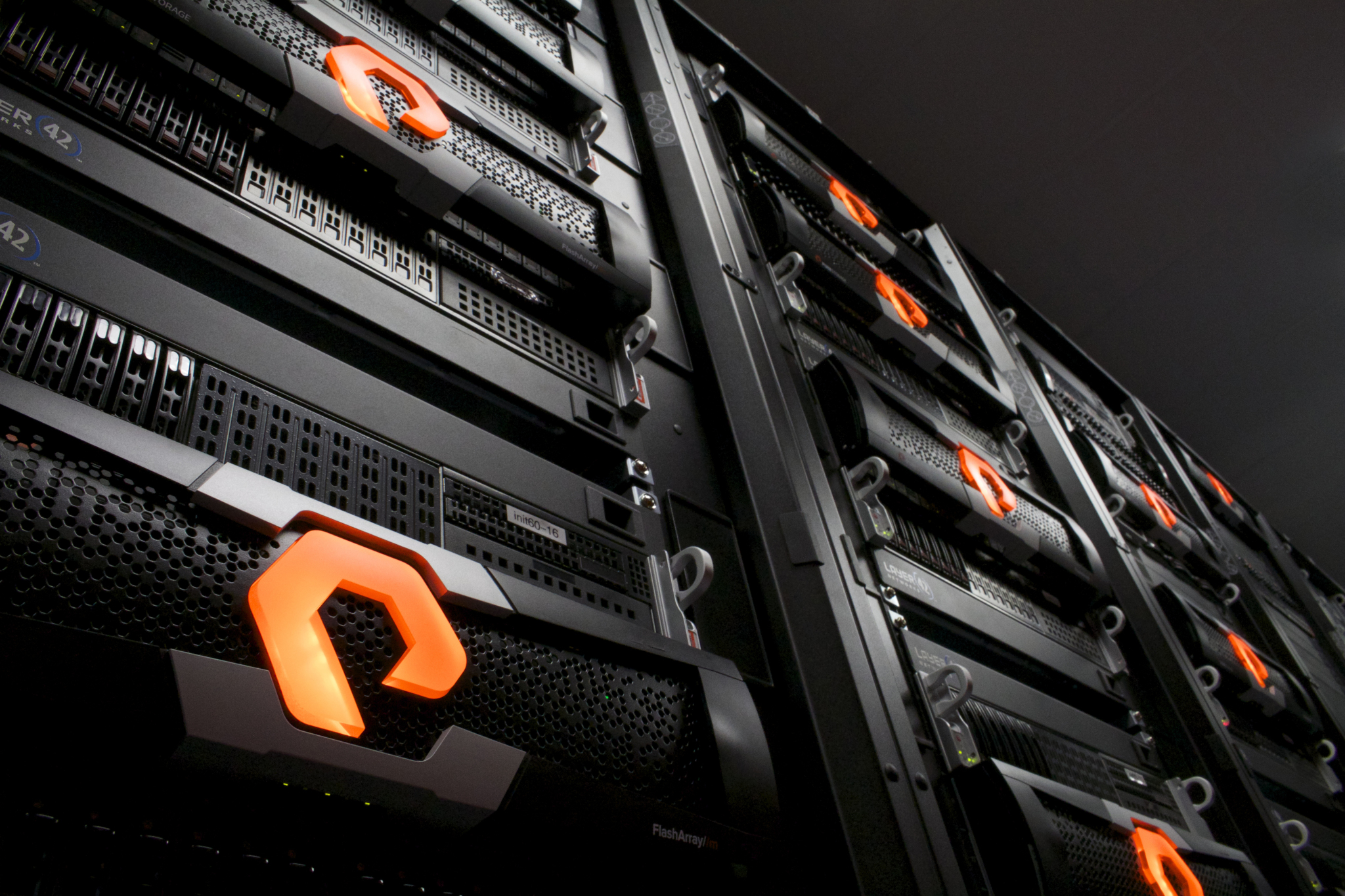 INFRA
INFRA
 INFRA
INFRA
 INFRA
INFRA
Pure Storage Inc. is playing its artificial intelligence hand this week with a clutch of announcements aimed at simplifying AI training and inferencing as well as applying machine learning to help customers better unravel storage conundrums.
The new Evergreen//One offering for AI is billed as the first purpose-built AI storage as-a-service. It provides guaranteed storage performance for graphics processing units in training, inferencing and high-performance computing workloads. The new service level agreement eliminates the need for planning or overbuying by allowing customers to pay only for throughput performance, the company said.
“It’s a consumption model where customers can dynamically set their pipes and provision throughput for optimal GPU efficiency as their training and inference changes,” said Prakash Darji, general manager of Pure Storage’s digital experience business unit.
The service addresses the variability of data throughput and bandwidth needs inherent in model training and inferencing, Darji said. “You’ll see up to 50 terabytes in your training environment with millions of parameters, which require high bandwidth,” he said. “Inference is more of a large data set, with lower throughput requirements. You have very different storage infrastructure needs for training versus inference.”
Customers can reserve more bandwidth than they need in the short term and only pay for what they use. “It’s built on the cloud consumption economics of pay-per-consumption and a reserve,” Darji said. “You get more predictability, more flexibility and ensure that the most expensive asset in your data center — the GPU — is fully utilized.”
New anomaly detection features apply machine learning to discover threats such as ransomware attacks, malicious behavior and denial-of-service attacks by looking for performance anomalies. The expanded service uses multiple machine learning models that analyze a user’s historical data to look for unusual patterns. Customers can identify the last known good snapshot copy for recovery.
Pure Storage has also upgraded its Pure Fusion storage-as-code offering to consolidate and optimize storage pools on the fly across structured and unstructured data, on-premises and in the cloud. The feature uses machine learning to improve over time. It is now embedded into the Purity operating environment and will be available across the entire Pure Storage platform to all global customers.
Also new is a generative AI copilot for storage. It uses knowledge gleaned from tens of thousands of customers to guide storage teams as they investigate performance and management issues. The feature uses multiple background large language models and collects telemetry from a user’s existing storage footprint.
“‘We collect almost 25 petabytes of telemetry per year,” Darji said. “That goes into the training base and our knowledge bases as well as the customers’ commands and user behavior.” The feature has limited capabilities to retrieve data in real time from the Pure1 management plane, and the company expects to improve real-time diagnosis over time.
“This is a rapidly evolving space,” Darji said. “We’re introducing this in a tech preview because we may refactor it and rewrite it 10 times over the next year based on the evolution of technology.”
The company is also introducing new services and service level agreements this week. The Enhanced Cyber Recovery and Resilience SLA is expanding to include disaster recovery scenarios. Under the agreement, customers get a customized recovery plan, clean storage infrastructure shipped to them by Pure Storage, onsite installation and additional professional services for data transfer. That allows them to recover quickly from snapshots and retain compromised equipment for forensics, Darji said.
A new security assessment offering provides visibility into security risks across a fleet of storage arrays based on intelligence aggregated from more than 10,000 customer installations. The assessment provides numerical scores and best practices that align with National Institute Of Standards And Technology 2.0 standards, regulatory compliance recommendations, remediation of potential security anomalies and rapid restoration.
A new AI-powered anomaly detection enhancement discovers threats such as ransomware attacks, unusual activity, malicious behavior and denial-of-service attacks by looking at performance anomalies. This expands on previously available ransomware detection based on data reduction anomalies.
The expanded detection is built on multiple machine-learning models that identify unusual anomalous behavior. The models analyze customer environments with historical data for anomalous patterns based on heuristics of performance as well as user context on how storage is used. Leveraging this capability, customers can identify the last known good snapshot copy to mitigate the operational impact by quickly identifying recovery point targets to restore data, reducing risk and guesswork.
Support our mission to keep content open and free by engaging with theCUBE community. Join theCUBE’s Alumni Trust Network, where technology leaders connect, share intelligence and create opportunities.
Founded by tech visionaries John Furrier and Dave Vellante, SiliconANGLE Media has built a dynamic ecosystem of industry-leading digital media brands that reach 15+ million elite tech professionals. Our new proprietary theCUBE AI Video Cloud is breaking ground in audience interaction, leveraging theCUBEai.com neural network to help technology companies make data-driven decisions and stay at the forefront of industry conversations.